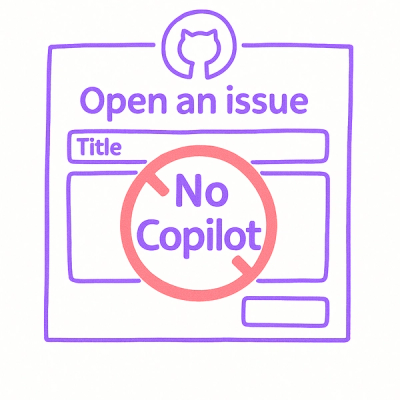
Security News
Open Source Maintainers Demand Ability to Block Copilot-Generated Issues and PRs
Open source maintainers are urging GitHub to let them block Copilot from submitting AI-generated issues and pull requests to their repositories.
react-radioactive
Advanced tools
DRY radio buttons for React
npm install react-radioactive
Unlike other HTML inputs, radio buttons always operate as a group. Consequently, we end up specifying the same attributes over and over again:
<input type="radio" name="language" onChange={ this.onChange } value="ruby" /> Ruby
<input type="radio" name="language" onChange={ this.onChange } value="python" /> Python
<input type="radio" name="language" onChange={ this.onChange } value="javascript" /> Javascript
To make matters worse, the only way to indicate the radio group's value is by setting the checked attribute to true on the appropriate radio button. This effectively means that we need to define a custom checked attribute for each individual radio button.
react-radioactive solves these problems through the use of factory functions. First, we define the behavior of the group:
var rf = require('react-radioactive').factory;
var r = rf({
name: "language",
onChange: this.onChange,
selectedValue: this.state.value
});
Then, in our JSX template, we can invoke the r(...) function to quickly build radio buttons that belong to this group:
<div>
{ r('ruby') } Ruby
{ r('python') } Python
{ r('javascript') } Javascript
</div>
Here's a more complete example:
var rf = require('react-radioactive').factory;
var MyComponent = React.createClass({
render: function() {
// We use the radioactive factory to define the behaviors
// of the radio button group:
var r = rf({
name: "language",
onChange: this.onChange,
selectedValue: this.state.value
});
// Now, we can easily create radio buttons that belong to
// this group by invoking the r(...) function:
return (
<div >
What's your favorite language?
<ul>
<li>{ r('ruby') } Ruby </li>
<li>{ r('python') } Python </li>
<li>{ r('javascript') } Javascript </li>
<li>{ r('java') } Java </li>
</ul>
</div>
)
},
getInitialState: function() {
return {
value: "javascript"
};
},
onChange: function(e) {
this.setState({
value: e.currentTarget.value
});
}
});
This will produce HTML output such as the following:
<div data-reactid=".0">
<span data-reactid=".0.0">
What's your favorite language?
</span>
<ul data-reactid=".0.1">
<li data-reactid=".0.1.0">
<input name="language" value="ruby" data-reactid=".0.1.0.0" type="radio">
<span data-reactid=".0.1.0.1">
Ruby
</span>
</li>
<li data-reactid=".0.1.1">
<input name="language" value="python" data-reactid=".0.1.1.0" type="radio">
<span data-reactid=".0.1.1.1">
Python
</span>
</li>
<li data-reactid=".0.1.2">
<input name="language" checked="" value="javascript" data-reactid=".0.1.2.0" type="radio">
<span data-reactid=".0.1.2.1">
Javascript
</span>
</li>
<li data-reactid=".0.1.3">
<input name="language" value="java" data-reactid=".0.1.3.0" type="radio">
<span data-reactid=".0.1.3.1">
Java
</span>
</li>
</ul>
</div>
Notice that the input for Javascript specifies checked="". This is because its value attribute matches the radio group's selectedValue.
factory as a default export.FAQs
DRY radio buttons for React
The npm package react-radioactive receives a total of 7 weekly downloads. As such, react-radioactive popularity was classified as not popular.
We found that react-radioactive demonstrated a not healthy version release cadence and project activity because the last version was released a year ago. It has 1 open source maintainer collaborating on the project.
Did you know?

Socket for GitHub automatically highlights issues in each pull request and monitors the health of all your open source dependencies. Discover the contents of your packages and block harmful activity before you install or update your dependencies.

Security News
Open source maintainers are urging GitHub to let them block Copilot from submitting AI-generated issues and pull requests to their repositories.

Research
Security News
Malicious Koishi plugin silently exfiltrates messages with hex strings to a hardcoded QQ account, exposing secrets in chatbots across platforms.

Research
Security News
Malicious PyPI checkers validate stolen emails against TikTok and Instagram APIs, enabling targeted account attacks and dark web credential sales.